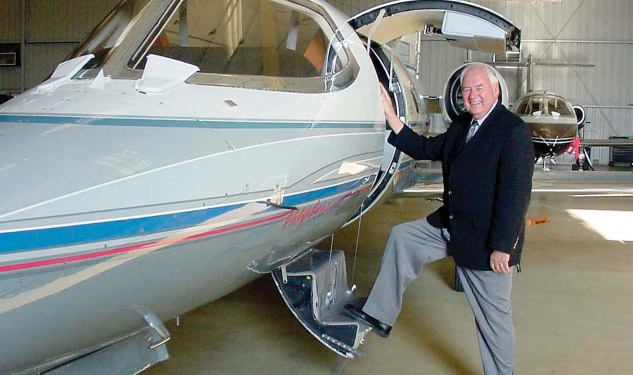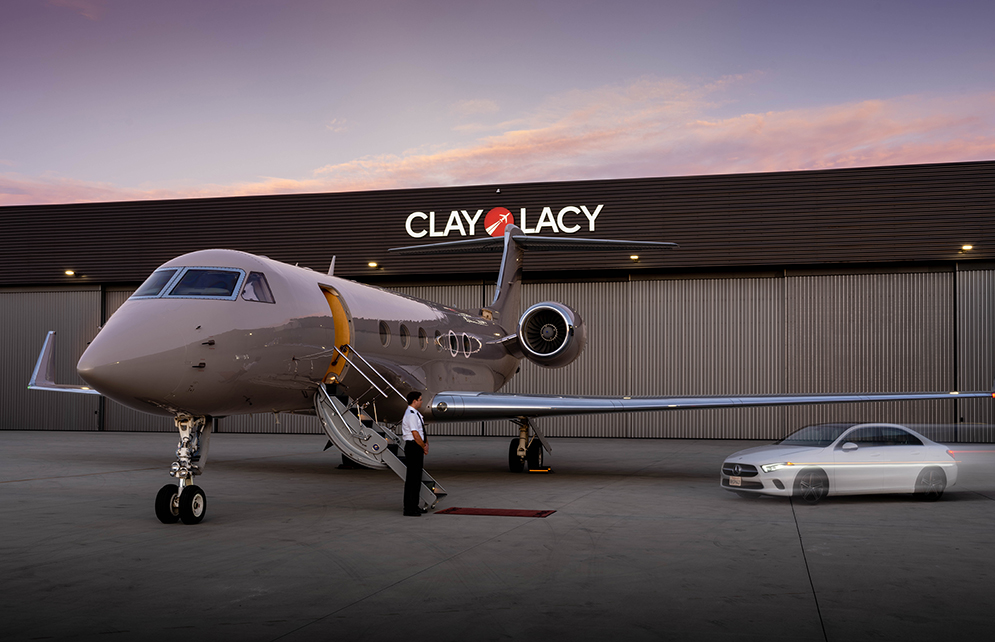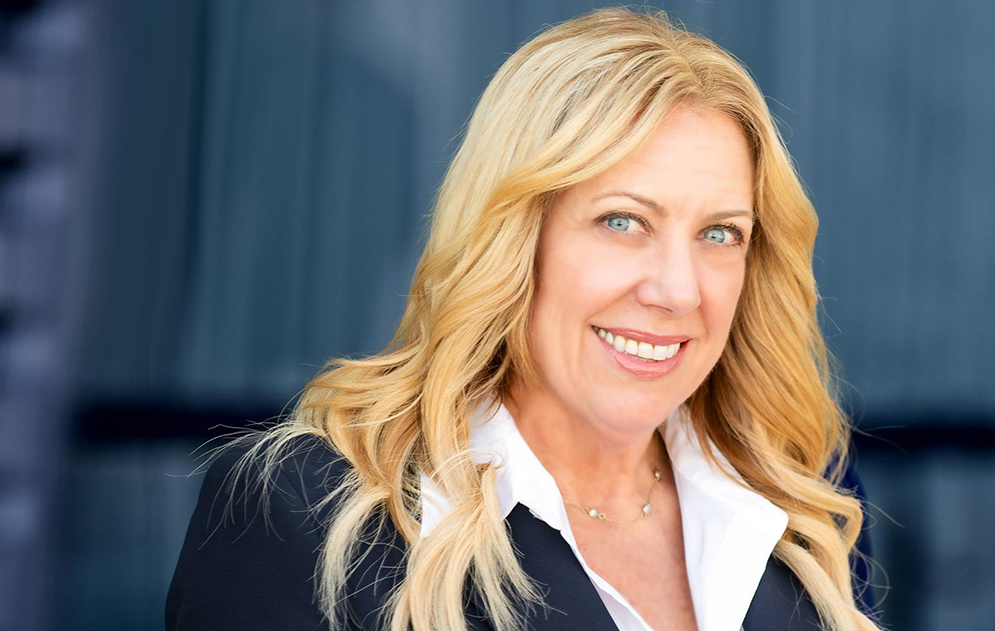
Buying Business Aircraft
By Clay Lacy – In June 2002 Pro Pilot Magazine’s “Purchasing Guide”
ATP/Helo/CFII Boeing 747, Gulfstream II/III/IV,
Hawkers, Learjets, Citations and
25 misc type ratings
Flying is easy compared with acquiring an aircraft. Know the marketplace before you start shopping. It’s a buyers market out there for business jets. I don’t believe prices are going to go much lower than they are today and it’s a great time to invest in a preowned or new business aircraft.
I always advise that you resist the temptation of buying the cheapest aircraft on the used market. You need to look for quality and not just at price. Always investigate the logbooks thoroughly, research the previous owner as much as you can and have the aircraft test flown by a qualified pilot you trust.
I know someone who recently came across a “great deal” on a Learjet 24. The price was about $400,000 and, with 2500 hrs left on the engines, it appeared to be an attractive purchase. After buying the aircraft from a Mexican-based operator, the new owner discovered that the engines actually had 5300 hrs, well beyond the normal Lear 24 overhaul life of 5000 hrs.
BUYER BEWARE
The former owner, as it turned out, had gotten hold of a service center stamp. He’d stamped off all kinds of inspections, including a 12-yr inspection, which had never actually been done.
The new owner now has about $800,000 invested in this airplane—the $400,000 purchase price plus $400,000 to bring it up to date. In today’s market, he could probably sell this aircraft for $550,000. A thorough prebuy carried out by a company familiar with the aircraft type would have saved this buyer all kinds of grief and money.
I’m an advocate of new business aircraft for those who can afford them. There are lots of good reasons for buying new, including warranty advantages, the latest avionics and upgrades, the best product support from manufacturers and certain tax benefits.
These days, there are early delivery positions available on most makes and models of new business aircraft. However, there are many people who want to take advantage of business aviation but who cannot yet afford the price of a new jet. For this market niche, there are a lot of great choices in the preowned market.
With more than 15% of all business jets for sale these days—the aircraft are relatively cheap. A good indicator of the state of the resale jet market is the thickness of Executive Controller magazine. It was pretty thin a year or 2 ago, but now it’s about 200 pages.
A good Learjet 35, selling for $3 million 1 1/2 years ago, is going for $2.3 million today. You can make a great deal on a Gulfstream II for $5–$6 million compared with $6–7 million a couple of years ago. Learjet 55s are down about $1 million to $3.5–$4 million.
I recently had someone offer me a nice Honeywell TFE731-powered Lockheed JetStar 2 for just $1.6 million. While it goes through fuel a little faster than some other aircraft, you can have an almost Gulfstream-sized cabin for a low upfront investment and it’s a great aircraft for domestic operations.
One of the all-time sleepers these days, in my opinion, is the corporate-configured Boeing 727. They’re down in the $6–8 million range and have the same cabin as a $50-million Boeing Business Jet (BBJ).
Prices of new aircraft aren’t coming down. A new GIVSP costs more than $32 million, compared with $17–$18 million for a used GIV. Last time we had a downturn in the business aircraft market was in 1992. Just when people had the feeling that business jet prices were as low as they were going to go, things started moving and prices really began to escalate.
MAKING THE DEAL
Over the years I’ve bought pre-owned aircraft direct from owners, direct from the factory and through brokers. You can find good deals anywhere. When I bought my GII back in 1992, a lot of people were trading up to GIVs and Gulfstream had 28 GIIs they wanted to get rid of. So I was in a position to make a good deal with the factory.
My 1965 model Learjet 24, which I use as my personal and corporate transport, was owned by a radio evangelist who was willing to sell direct at a price I was happy with. I’ve also worked with brokers over the years to buy and sell aircraft and I’ve found most of them to be good, honest people.
When you’re buying an aircraft, it’s often a good idea to hire a buyer’s broker. You tell them what you’re looking for and, for a fee, they’ll act on your behalf. I’ve often found it’s better to let a broker do the haggling for you. When the deal is between brokers there’s a mutual respect.
They both want to make a deal and they don’t try to make the price higher than it should be. A common situation among owners is that they feel their aircraft is worth more than it will realistically bring on the market. Their broker is often able to talk them down a little and make sure they’re realistic.
With the Internet and today’s free flow of information, there are hardly any secret deals out there. If you specify that you want an aircraft between such and such a serial number, and give the same information to 4 brokers, they’ll usually all come up with the same aircraft.
Before buying an aircraft, you need to evaluate all your options, including charter, fractional ownership, having your aircraft managed and setting up a traditional flight department. If you’re flying more than 40 hrs a month, you can usually justify buying your own corporate aircraft. While it’s often less expensive to have a management company look after your new corporate aircraft, many owners want their own pilots, their own mechanics and their own hangar.
DOING THE RESEARCH
If you choose to go the managed option, and you’re in the Los Angeles area, you’re looking at a management fee of about $3000– $5000/month for a Gulfstream-type aircraft, about $5000 in hangar rental, $500 per day in crew costs, plus aircraft maintenance. If you choose to hire your own pilots, you’re looking at a salary of $80,000–$140,000 for a Gulfstream captain, $50,000–$80,000 for a first officer and $60,000 for a mechanic.
There’s been a growing shortage of qualified corporate pilots over the past couple of years. While this trend has eased off lately as corporate pilots who recently went to the airlines have been furloughed, I foresee an ongoing shortage of qualified and experienced corporate pilots for some time to come.
However, these days there’s reasonable availability of freelance corporate pilots as a result of pilot jobs shed in flight department mergers. Many corporate pilots enjoy this freelance work, and typical rates in the Los Angeles area run $400–$450 per day for a GIV captain and $300 per day for a Learjet 35 captain.
Putting your aircraft out on charter will help cover operating costs and defray total ownership costs. Chartering out a GII brings an owner about $1700/hr, while letting out your GIV will usually bring you close to $3000/hr.
If you consider that a preowned GIV costs about $260,000 a month to own, including finance costs, you’ll be able to offset this by $120,000 a month or so with 40 hrs of charter.
Corporate aircraft insurance has escalated 25–100% since the terrorist attacks last September. In our case, we’re paying about 30% more for hull and liability insurance than last year. However, aircraft insurance is still not a really big expense. It runs about $55,000 a year on a $5-million GII hull value.
Financing is usually not a problem for a corporate aircraft. Assuming a solid end user owns the aircraft, you can get virtually 100% financing these days at rates as low as prime. I was talking with a Bank of America VP not long ago and he told me the banks are really keen on financing corporate jets. Historically, banks have very low loss rates on these types of loan, compared with financing of other chattels.
One of the great things about preowned aircraft is that they bring into the market business jet users who will invariably become buyers of new aircraft.
If someone would really like a Citation Bravo at $6.3 million, but can only afford a Citation II at $2 million, it’s better for everyone, including the manufacturers, to get the prospect into a used jet because he or she will be a potential new jet buyer down the line.
Take your time in selecting a pre-owned aircraft. Examine the log- books carefully and work with experienced pilots who’re qualified in type. It’s worth paying more up front for a mechanically sound aircraft with current inspections.
If the airplane you’re looking at has just had a landing gear inspection, that can make a $30,000 difference. And a recently completed 12-year inspection on a small to midsize jet can add more than $100,000 in value.
These days, avionics enhancements are relatively affordable, as are cabin upgrades and new paint. We have a client who recently bought a GII, put on Aviation Partners winglets, upgraded the avionics somewhat, gave the aircraft a new paint job and completely redid the interior with all new cabinetry, liners and fabrics.
With about $1 million invested in avionics and cabin upgrades, they’ve put about $6.5 million into the airplane and they’re flying it 70–80 hrs a month. Formerly a charter customer, they’re now completely sold on the benefits of business aviation. I can see them trading up to a new Bombardier Global Express, Dassault Falcon 900EX, GV or maybe a BBJ.
CONSIDER THESE 5 THINGS BEFORE YOUR NEXT AIRCRAFT PURCHASE
- Are you prepared to differentiate between significant maintenance problems and normal wear, and their effect on price, value and resale of the airplane you may have already located?
- Are you familiar with all the closing documents and procedures? Can you ensure both you and the seller have all the necessary documents at closing so the trans- action won’t be delayed? And are you familiar with the legal specifics those documents will bind to the buyer and seller?
- Do you know the ins and outs of aircraft title work and how to deal with clouded titles and obtain a valid release of lien?
- Can you determine the limitations, as well as the expertise, of the organization or facility performing your pre-purchase inspection?
- Are you aware that the purchase agreement you sign may be the single most important document, among the dozen or so documents sometimes required, and which specific items should be included in a proper agreement?
By Clay Lacy – founder of Clay Lacy Aviation at VNY (Van Nuys CA), is a highly experienced pilot who has been performing flight-checks and writ- ing various editorials for Pro Pilot since May 1997.


